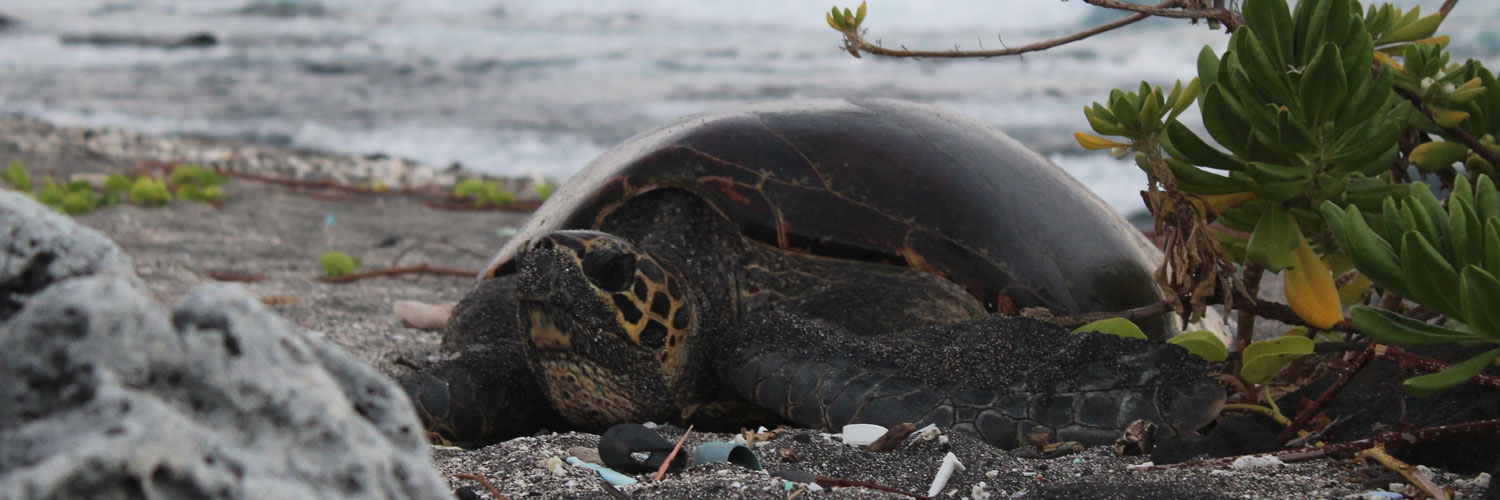
HONUʻEA OF HAWAIʻI
Sea Turtles of Hawaiʻi
Hawaiʻi is home to five species of sea turtles: Green, Hawksbill, Leatherback, Loggerhead, and Olive Ridley.
Hawksbill and green sea turtles are the species most frequently observed in Hawaiʻi (see how to identify them here). Both species are listed as “endangered” under the 1973 Endangered Species Act, and are protected under state laws. Although the Hawaiian hawksbill turtle population is the largest in the U.S. Pacific Islands, it is thought to be one of the smallest populations of hawksbills in the world (Gaos et al. 2020). Therefore, protecting Hawaiian hawksbills and their nests is critical to their continued survival. Only 10-25 hawksbill females nest each year in Hawaiʻi, compared to 400-800 green sea turtles that nest here annually.
Hawaiian culture talks about sea turtles frequently. ʻEa or Honuʻea (hawksbill turtle) and Honu (green turtle) are mentioned in the fourth verse of the Kumulipo, the Hawaiian creation chant. Some families continue to revere sea turtles as their ʻaumakua, spiritual guardian.
Hawksbill Sea Turtle
Hawksbills in Hawaiʻi are referred to as Honuʻea or simply ʻea. Hawaiian hawksbill turtles predominately nest on the Island of Hawaiʻi, however a few nests are found on Maui and Molokaʻi each year.
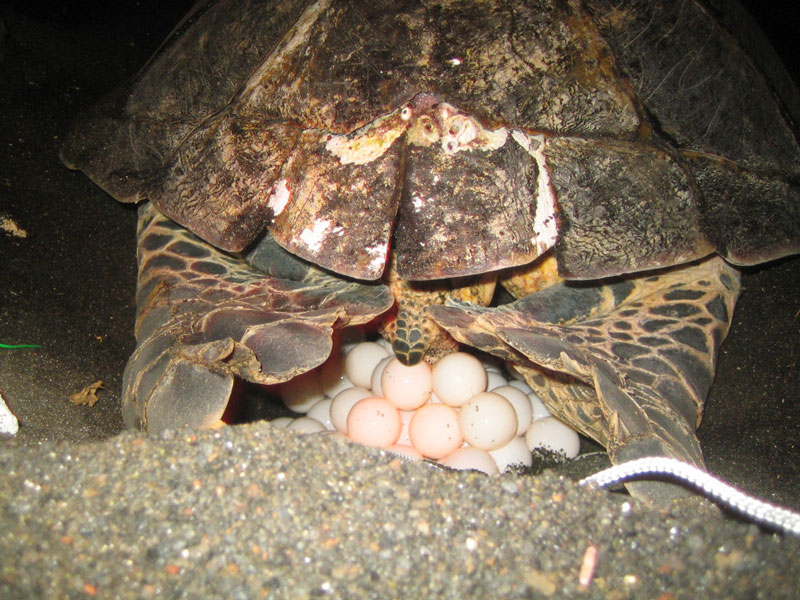
Nesting
It is believed that hawksbill sea turtles reach sexual maturity at 20-29 years old. A nesting female will come back to the same beach from where she hatched once every 2-8 years, and will lay a clutch of 70-250 eggs (average of 180). She will lay anywhere from 1-6 additional nests during the nesting season (May-December), about 20 days apart.
Incubation
The eggs incubate for a little over two months depending on the temperature, which also determines a hatchling’s sex in a process called temperature-dependent sex determination. Warmer nests tend to produce a greater ratio of females to males and cooler nests have the opposite result.
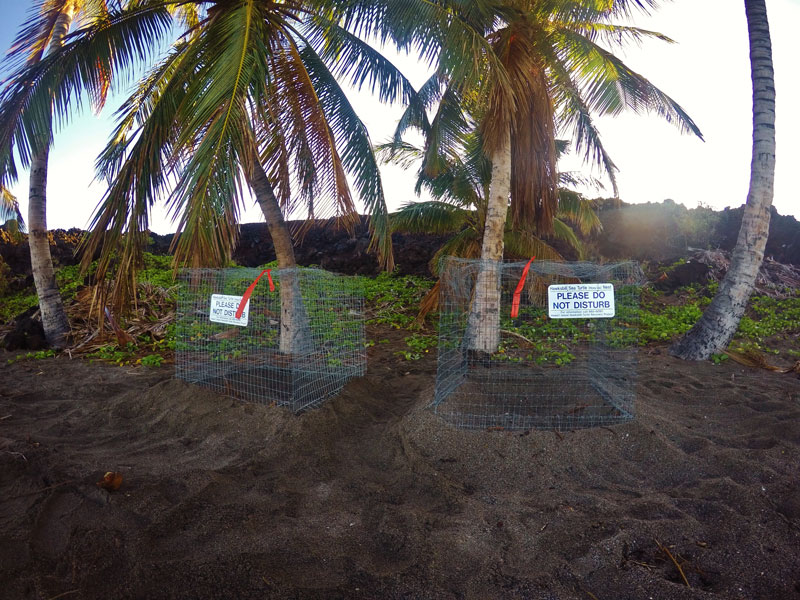
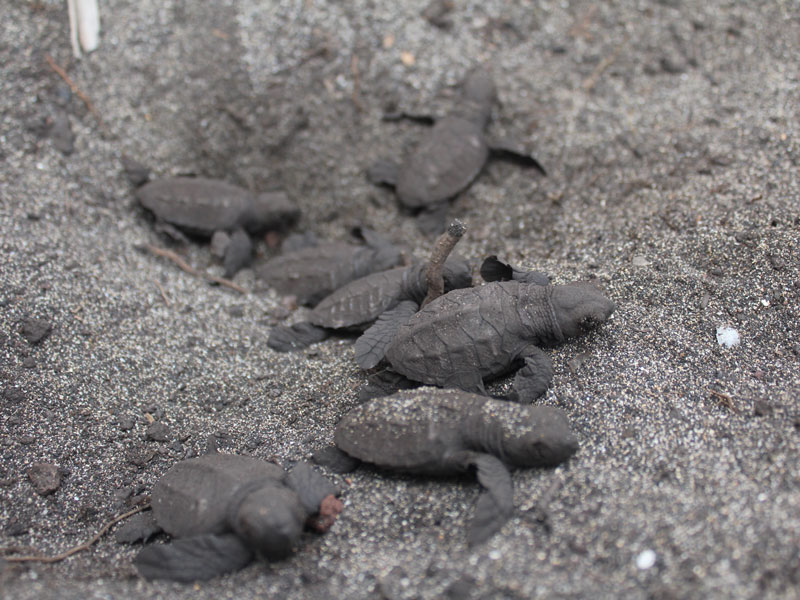
Hatchlings
Hatchlings will typically emerge from the nest at night, following the brighter horizon caused by the reflection of the moon on the ocean. After entering the ocean, they begin their journey through what is termed the “Lost Years” because very little is know about juvenile movement patterns, growth rates, or diets. They come back to the Hawaiian islands as small juveniles to mature and eventually reproduce and nest. Scientists estimate that less than 1% of sea turtle hatchlings reach adulthood.
Threats to Sea Turtles
Sea turtles world wide are threatened by both natural and anthropogenic-caused issues. Some of the larger threats to hawksbill sea turtles in Hawaiʻi including the following:
Human Activity
Coastal Development
Residential and commercial infrastructure commonly occupies shorelines that would otherwise provide suitable sea turtle nesting habitat. Artificial light associated with coastal development disorients nesting females and hatchlings, hindering their ability to successfully find or return to the ocean. Human activity on or near the beach can also disrupt and deter females from nesting. Furthermore, shoreline armoring structures (e.g., jetties, seawalls, breakwaters) exacerbate coastal erosion and reduce the area of available nesting habitat.
Marine Debris
Sea turtles ingest plastic marine debris and are susceptible to entanglement in derelict fishing gear. Marine debris that has washed ashore can also obstruct nesting females and emerging hatchlings.
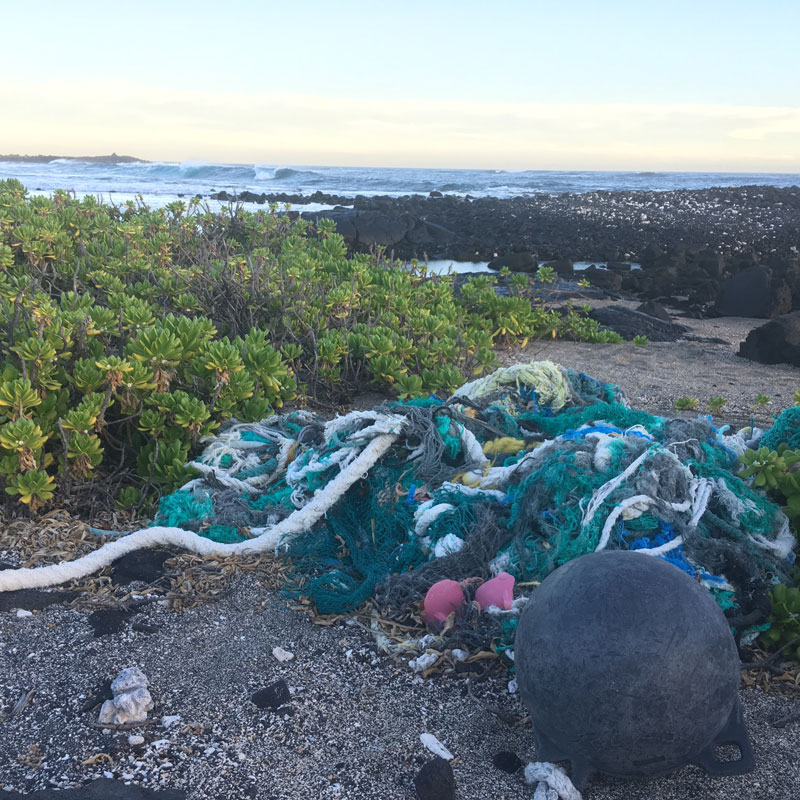
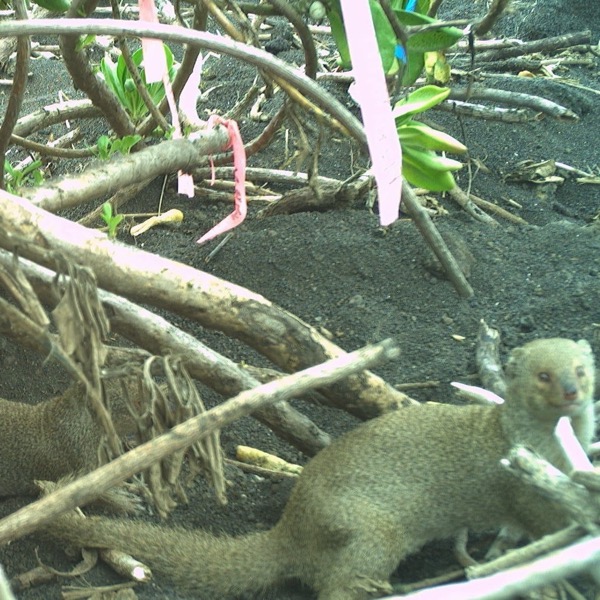
Predators
Non-Native Predators
Non-native predators introduced to the Hawaiian islands that are threats to sea turtles include mongooses, rats, feral cats, feral pigs. All of these predators dig up nests and eat turtle eggs. Mongooses, rats, and feral cats also predate emerging hatchlings.
Native Predators
Crabs and seabirds predate hatchlings as they make their way to the ocean, and seabirds also predate hatchlings while they are swimming in surface waters. Fortunately, crabs and seabirds are not currently a threat at any of the monitored hawksbill turtle nesting beaches. Hatchlings are also predated upon by many different species of fish and eels, and sea turtles of all sizes are vulnerable to shark attacks.
It may seem that the threats to sea turtles are too big to overcome, but there are many things within our control that can be done to protect and conserve turtle populations! Public outreach and education is one of the most beneficial ways to spread the word about sea turtle conservation.
Hawksbill vs Green Sea Turtle Identification
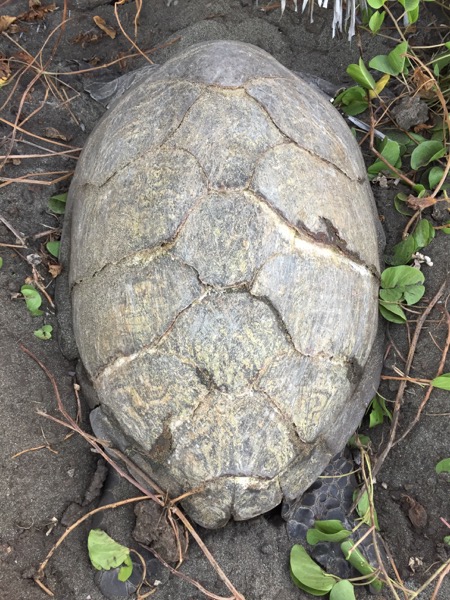
Hawksbill / Honuʻea
Narrow head and pointed beak
4 pre-frotonal scales (between eyes)
Shell: serrated edges

Green / Honu
Rounded head
2 pre-frontal scales (between eyes)
Shell: smooth edges
